The story of
Emperor Constantine
Founder of our Order
Inspiring our morals
Constantine was the son of Constantius Chlorus, a Roman general who served as a Caesar (junior emperor) under the Tetrarchy system established by the emperor Diocletian. Constantius was known for his military campaigns and was appointed to govern the western part of the empire, including Gaul and Britain. He was also notable for his tolerance of Christians, which was unusual at a time when many Roman leaders were actively persecuting them.
Constantine and his father both played roles in suppressing uprisings in Britain during the late 3rd and early 4th centuries AD.
Constantius Chlorus, who was the governor of Britain at the time, led military campaigns against various tribes in the region, including the Picts and Scots in the north. He was successful in pushing back these tribes and restoring Roman control over much of the region.
Constantius died in 306 while still serving as Caesar, and Constantine was proclaimed his successor by his troops. He then played a role in putting down a rebellion in Britain led by the Roman usurper Allectus. In 296 AD, Allectus had seized control of Britain from the Roman Empire and established his own regime. Constantine was sent to Britain to assist in the campaign against Allectus, and played a key role in defeating the usurper’s forces at the Battle of the Medway in 296 AD.
Following the victory, Constantine was appointed to a series of high-ranking military and political positions, which helped to establish his reputation and pave the way for his eventual rise to the imperial throne.
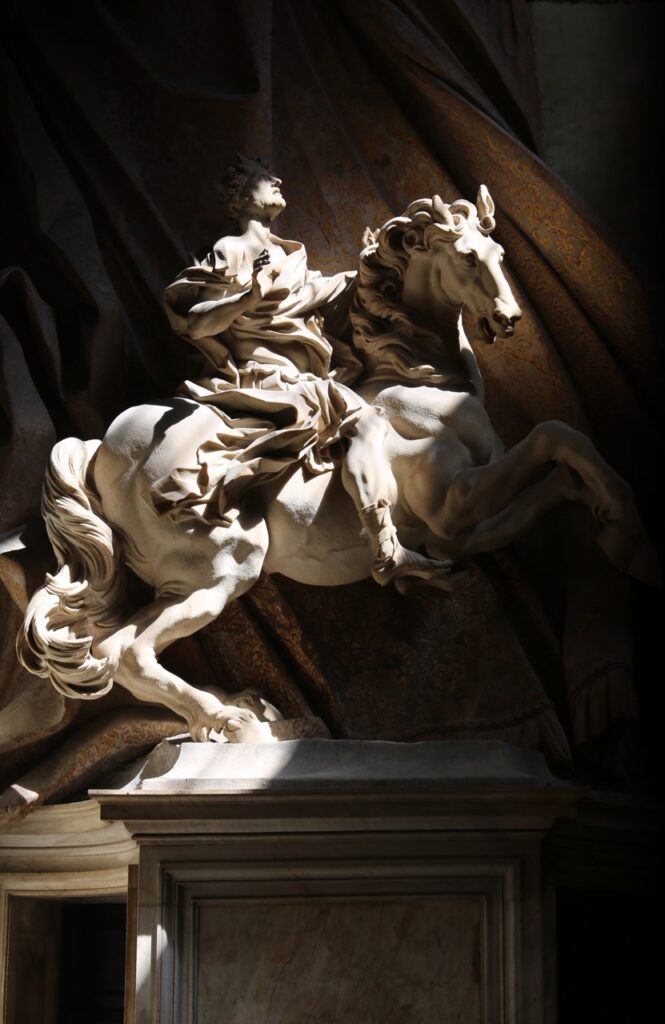
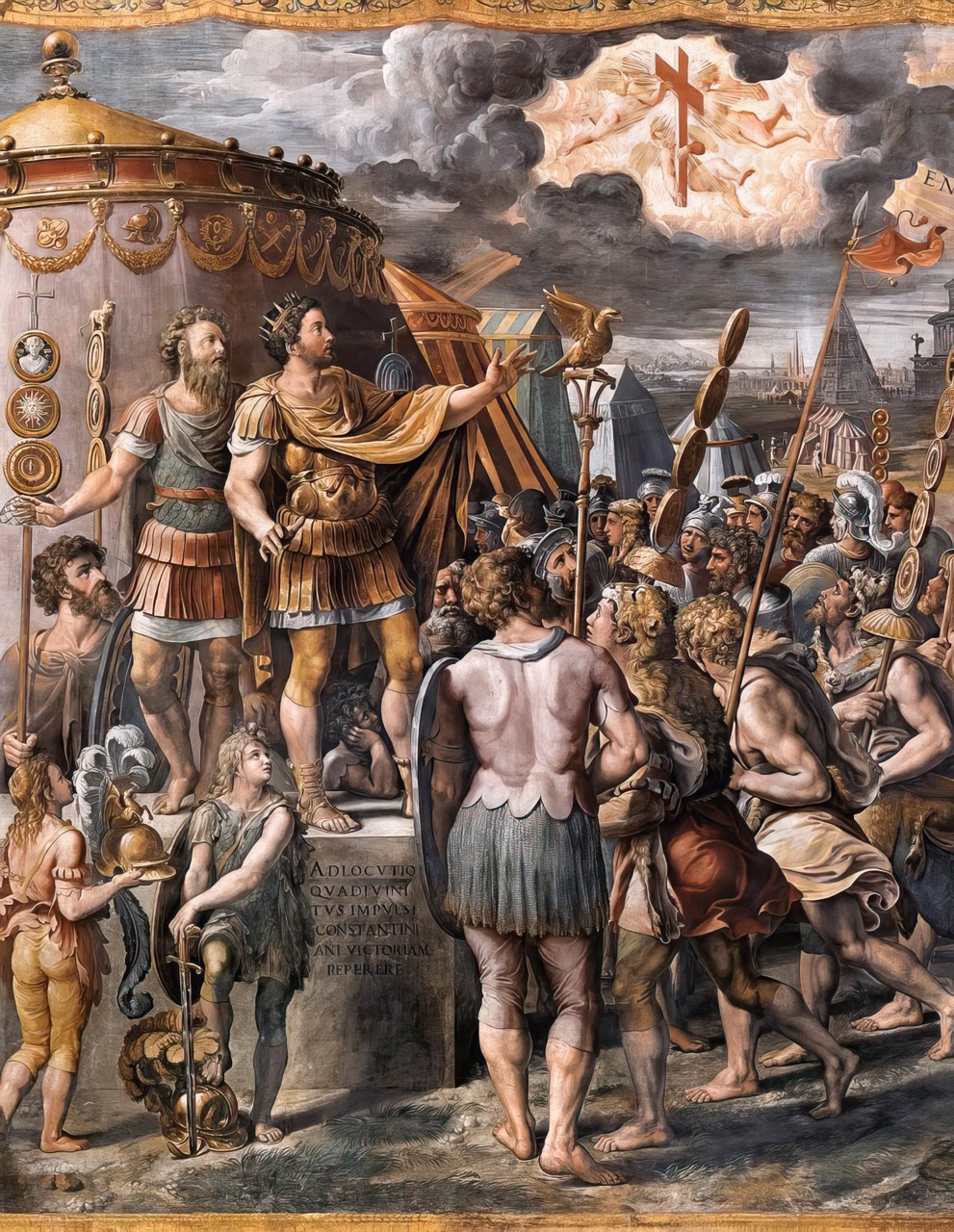
According to tradition, in the year 312 AD, Constantine the Great, then a pagan, was marching towards Rome to battle his rival, Maxentius, in a struggle for power over the Roman Empire. Near the Milvian Bridge, which spans the Tiber River north of Rome, Constantine is said to have seen a vision of a cross in the sky, accompanied by the words “In this sign you will conquer” (in Latin, “In hoc signo vinces”).
After seeing this vision, Constantine is said to have converted to Christianity and ordered his soldiers to paint the symbol on their shields as a sign of their faith. The next day, Constantine’s army defeated Maxentius’ forces in a battle that took place near the Milvian Bridge.
The story of Constantine’s vision at the Milvian Bridge is recounted in several early Christian texts, including the writings of Eusebius of Caesarea and Lactantius. Constantine’s victory over Maxentius at the Battle of Milvian Bridge was a pivotal moment in his rise to power and his eventual conversion to Christianity.
Constantine’s Edict of Milan, issued in 313 AD, granted religious toleration to Christians and ended the persecution of the Christian Church in the Roman Empire. This allowed Christians to practice their religion openly, own property, and worship without fear of reprisals.
The Edict of Milan was not a complete and immediate change in Roman policy towards Christianity, but it marked a turning point in the official attitudes of the empire towards the Christian faith. Prior to this edict, Christianity was often viewed with suspicion and hostility by the Roman government, which saw it as a subversive and potentially dangerous religion.
Constantine’s own conversion to Christianity, or at least his support for the Christian faith, also played a role in changing official attitudes towards the religion. As the Roman Emperor, Constantine had significant power and influence over the policies and attitudes of the empire, and his support for Christianity helped to pave the way for the religion to become more accepted and integrated into Roman society.
Constantine’s policies towards Christianity included the construction of Christian churches and the appointment of Christian officials to positions of power. He also convened the Council of Nicaea in 325 AD, which was a gathering of Christian leaders aimed at resolving theological disputes and establishing a unified Christian doctrine.
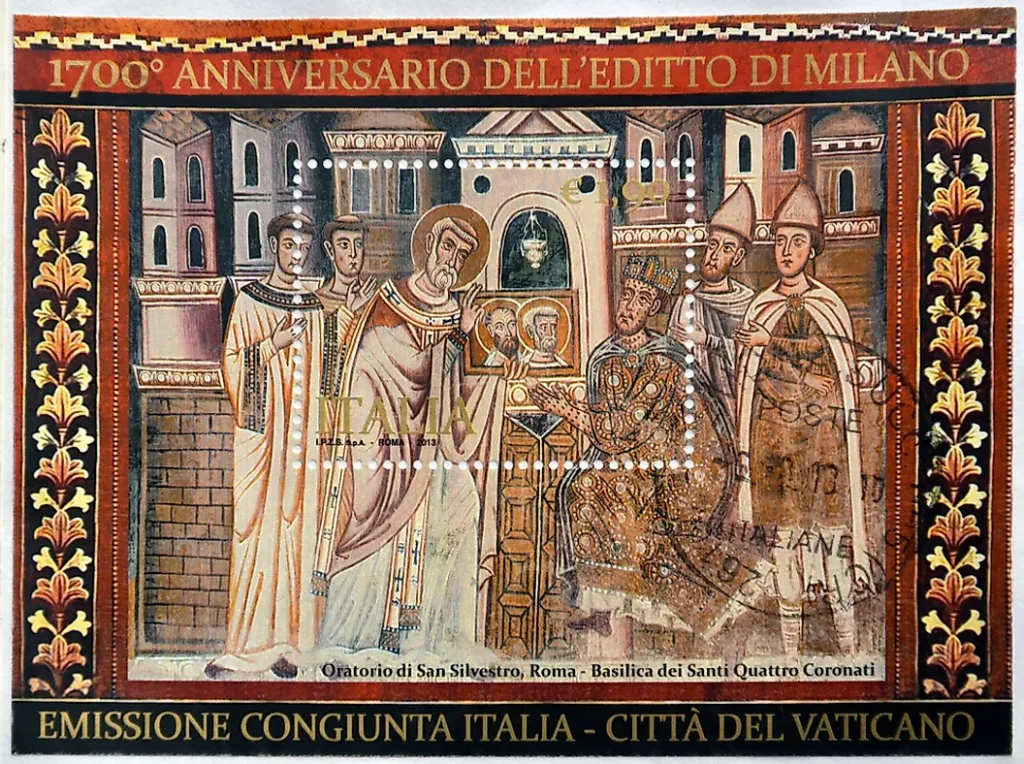
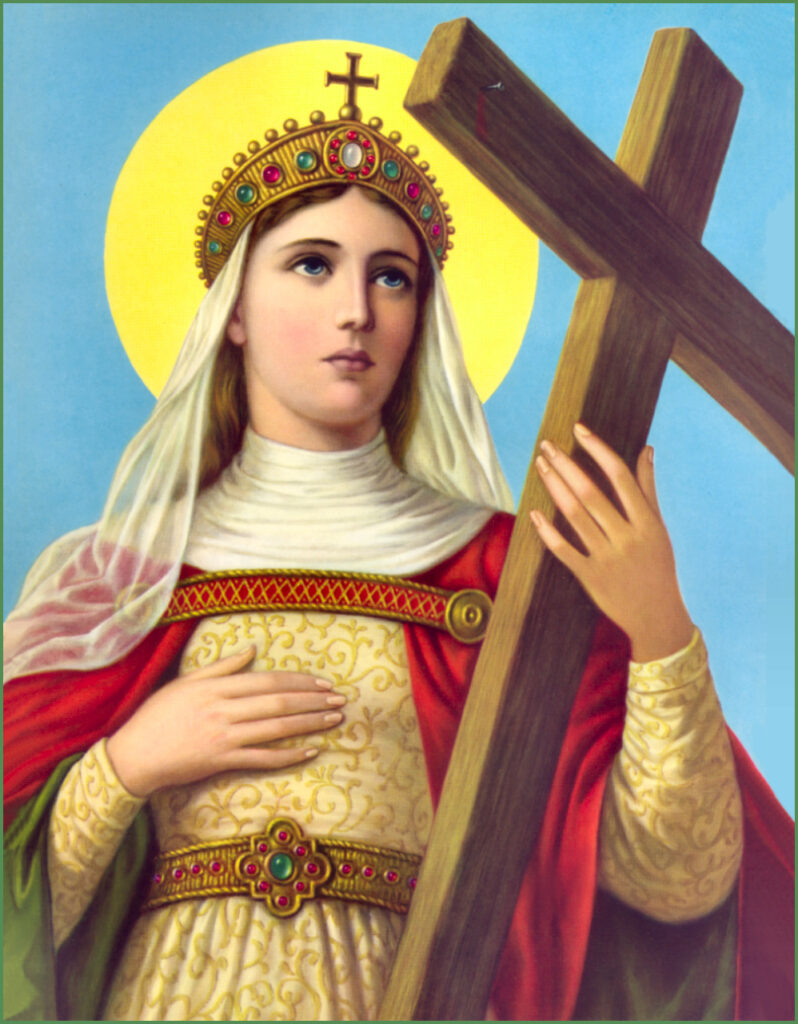
St. Helena, also known as Helena of Constantinople, was the mother of Constantine. She is remembered for her piety and her legendary discovery of the True Cross, the cross on which Jesus Christ was crucified.
According to tradition, Helena made a pilgrimage to the Holy Land in the early 4th century, where she visited the sites associated with the life of Jesus. During her visit, she is said to have discovered the True Cross buried beneath a temple dedicated to Venus in Jerusalem.
After the discovery of the True Cross, Helena oversaw the construction of several churches in the Holy Land, including the Church of the Holy Sepulchre in Jerusalem, which was built on the site of Jesus’ crucifixion and burial. She also founded churches in Bethlehem and on the Mount of Olives.
In addition to her religious work, Helena was a patron of the arts and supported the building of many public works, including hospitals and schools. She was also known for her charitable works, and is said to have helped free prisoners and provide aid to the poor.
As the first Christian emperor of the Roman Empire, Constantine the Great left a lasting legacy on the architecture and urban planning of the empire. Here are some of the most notable buildings and structures associated with Constantine:
Arch of Constantine: This triumphal arch was erected in Rome in 315 AD to commemorate Constantine’s victory over Maxentius at the Battle of Milvian Bridge. The arch is notable for its extensive use of spolia, or reused architectural elements, from earlier Roman monuments.
Basilica of Maxentius and Constantine: This enormous public building in Rome was begun by Maxentius and completed by Constantine. It features a vast central nave and towering vaulted ceilings, and was used for public meetings and court hearings.
Church of the Holy Sepulchre: Constantine ordered the construction of this church in Jerusalem in the 4th century to commemorate the site of Jesus Christ’s crucifixion and burial. The church remains a major pilgrimage site for Christians to this day.
Old St. Peter’s Basilica: This church in Rome was constructed in the early 4th century on the site of an earlier basilica, and was said to have been built on the site of St. Peter’s burial. The basilica was demolished in the 16th century to make way for the current St. Peter’s Basilica.
Palace of Constantine in Trier: This vast palace complex in modern-day Germany was one of Constantine’s preferred residences and includes extensive baths, audience halls, and private apartments.
Constantinople: Perhaps Constantine’s most lasting legacy was the founding of a new capital city for the Roman Empire in Byzantium (modern-day Istanbul), which he renamed Constantinople. The city became the center of the Eastern Roman Empire and a major cultural, economic, and political power in its own right.
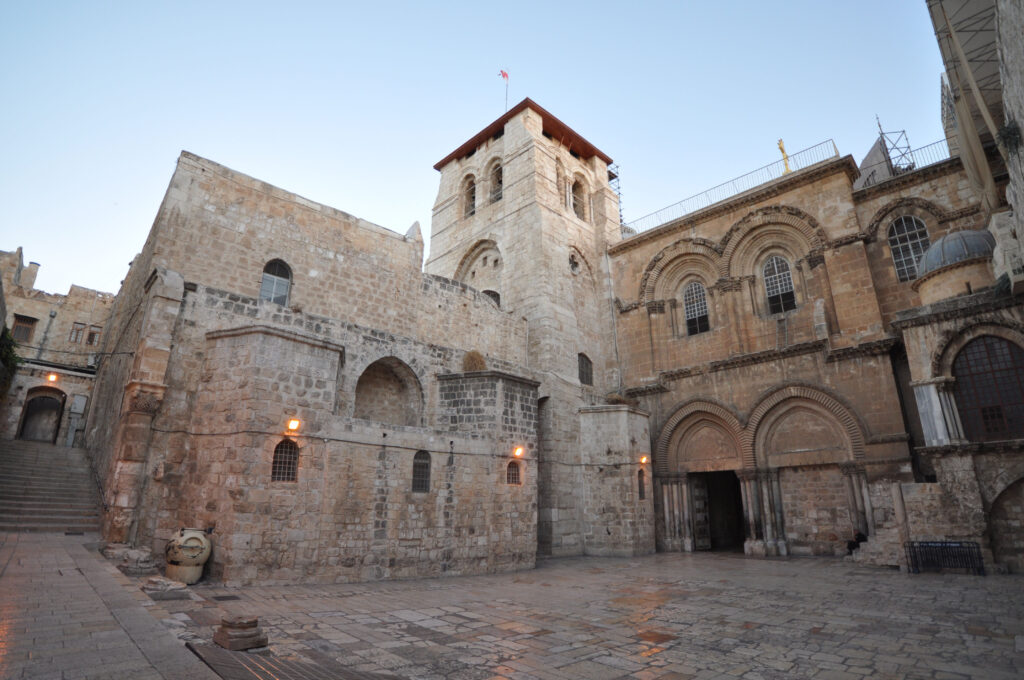
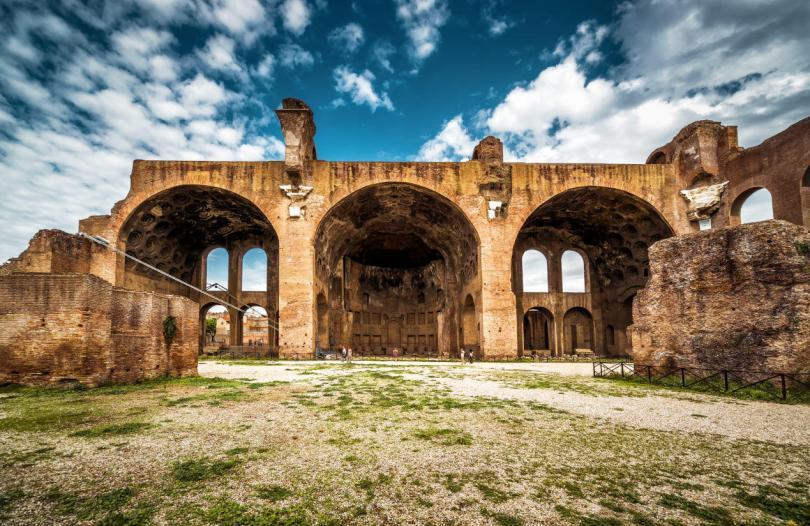
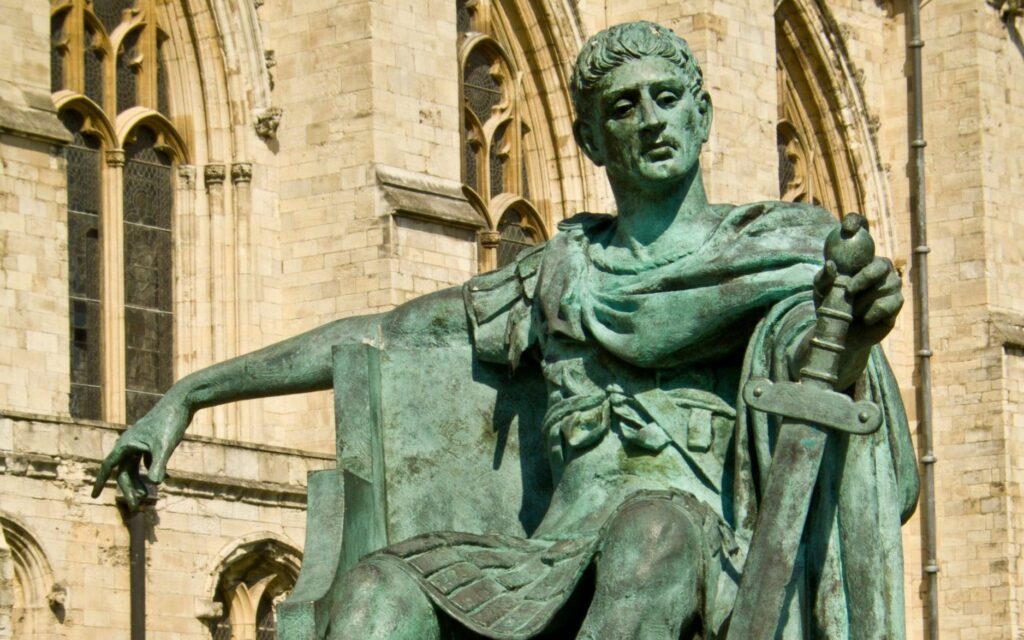
There are many statues of Constantine located throughout the world, particularly in areas where he played a significant role in history.
One notable statue of Constantine is located in York, England, near the ruins of the Roman fortress that he rebuilt in the early 4th century. The statue is part of the York Minster, which is one of the largest cathedrals in Northern Europe and was built on the site of an earlier Roman basilica. The statue of Constantine was added to the cathedral’s exterior in the 1990s and depicts the emperor holding a sword, commemorating the accession of Constantine as Roman Emperor in AD 306 on this site, after the death of his father Constantius Chlorus in York. This statue was revealed in 1998 and is a gift by our order.
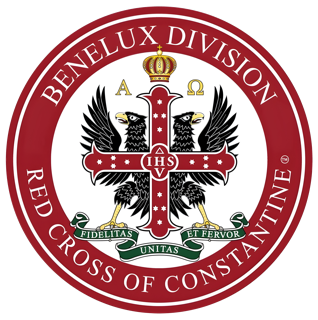
Order of The Red Cross of Constantine and the and the Orders of the Holy Sepulchre
and St. John the Evangelist – Benelux Division
We use cookies on our website to provide information about visitors and traffic on our website.